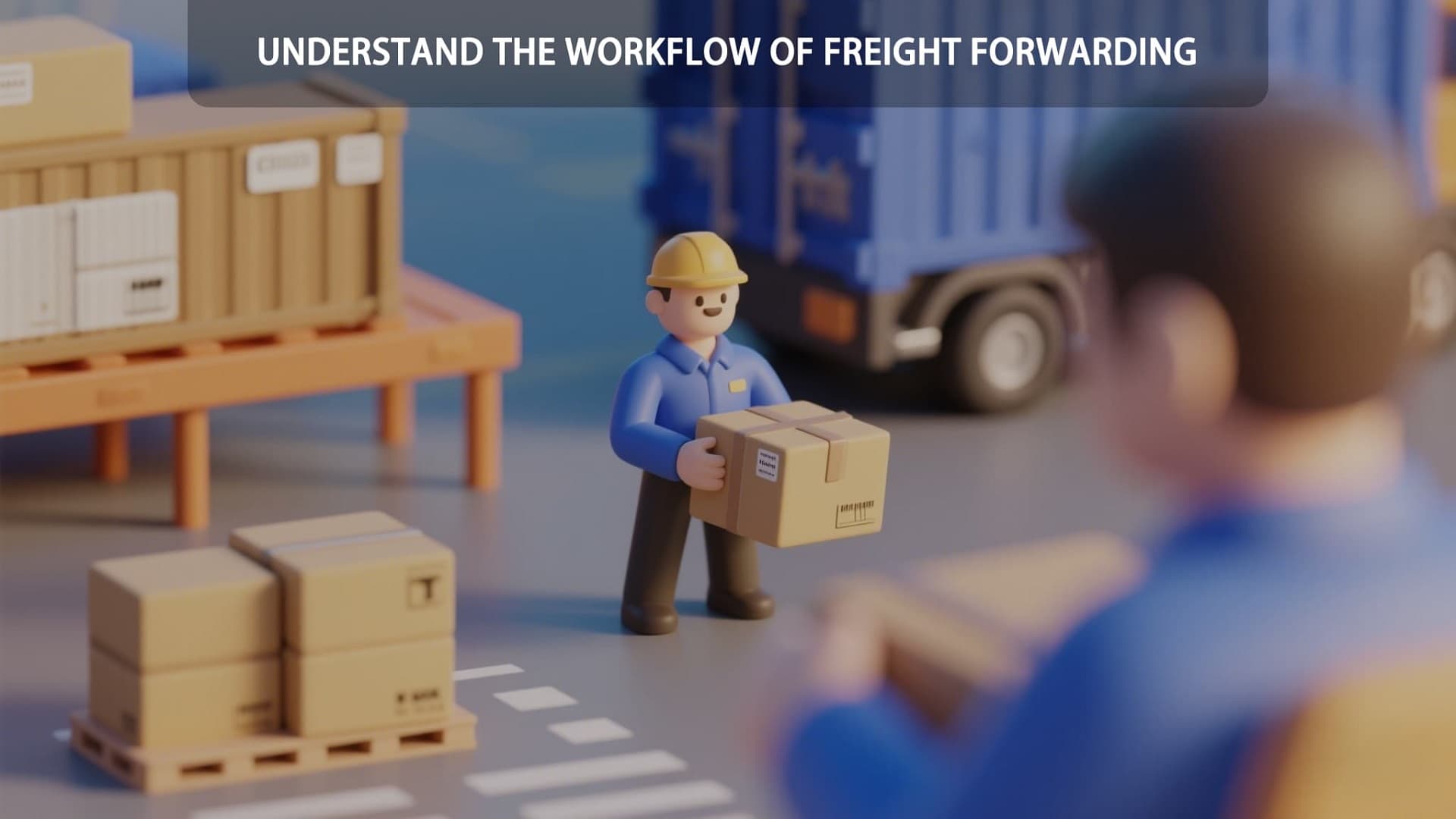This article will take you through the entire process of freight forwarding work in detail and help you understand the role and significance of freight forwarding.

1. Client Needs Assessment & Solution Design
1.1 Cargo Information Collection
Key Tasks:
-
-
Verify cargo type (general goods/dangerous goods/temperature-controlled pharmaceuticals/oversized cargo).
-
Collect physical parameters (volume, weight, packaging specifications).
-
Clarify requirements (delivery urgency, budget, special handling needs).
-
Common Issues: Misclassification of goods (e.g., labeling lithium batteries as general cargo).
Solutions: Provide a Cargo Classification Checklist and request MSDS (Material Safety Data Sheet) or product images.
1.2 Transportation Plan & Quotation
Key Tasks:
-
-
Compare routes (sea/air/rail/multimodal) and optimize solutions (e.g., China-Europe rail + trucking).
-
Calculate freight charges using volumetric weight (for lightweight cargo) and optimize container loading.
-
Issue transparent All-Inclusive Quotes (e.g., ocean freight + THC + documentation fees + insurance).
-
Data Support: Predict seasonal rate fluctuations (e.g., 30%-50% peak season surcharges for U.S. West Coast ports).
2. Space Booking & Transportation Coordination
2.1 copyright Negotiation & Booking
Key Tasks:
-
-
Secure competitive rates via copyright contracts (e.g., MQC agreements with shipping lines).
-
Coordinate container pickup and trucking schedules to avoid demurrage fees.
-
Manage emergencies (e.g., rebooking alternative vessel space within 24 hours if containers are rolled).
-
Case Study: Redirected cargo via transshipment port during typhoon-related cancellations.
2.2 Cargo Consolidation & Loading Supervision
Key Tasks:
-
-
Monitor loading (prevent improper stacking, overweight, or hazardous cargo mixing).
-
Document container sealing with photos and tracking codes.
-
Handle special container needs (e.g., open-top containers for machinery, flat racks for oversized equipment).
-
3. Document Compliance & Customs Preparation
3.1 Document Preparation & Review
Critical Documents:
| Document Type | Key Requirements |
| Bill of Lading (B/L) | Consistency with LC terms |
| Commercial Invoice | Accurate Incoterms (FOB/CIF) & value |
| Certificate of Origin | HS code accuracy & issuing authority stamps |
| Dangerous Goods Docs | UN numbers, packaging codes, emergency protocols |
Common Risks: EU customs delays due to missing EORI numbers on invoices (penalties: €100/day).
Solutions: Offer AI-Powered Document Verification Tools to detect discrepancies.
3.2 Pre-Clearance & Regulatory Compliance
Key Tasks:
-
-
Review destination-country regulations (e.g., FDA compliance for U.S. imports).
-
Submit HS code pre-classification to avoid customs disputes.
-
Facilitate certifications (e.g., Saudi SABER, Russian GOST-R).
-
4. In-Transit Monitoring & Exception Handling
4.1 Real-Time Cargo Tracking
Technology Integration:
-
-
Track vessel positions via AIS systems.
-
Monitor port IoT data (e.g., congestion alerts at Rotterdam).
-
Send automated updates (e.g., "Container departed/arrived/cleared").
-
4.2 Emergency Response Protocol
Scenarios & Actions:
| Issue | Response |
| Port strikes | Activate alternate ports + inland transit |
| Customs inspection | Deploy local agents + submit supplements |
| Production delays | Arrange airfreight backup + claim copyright compensation |
5. Destination Services & Final Delivery
5.1 Customs Clearance & Tax Management
Key Tasks:
-
-
Calculate and pay duties/VAT (e.g., 21% EU VAT rates).
-
Resolve trade disputes (e.g., anti-dumping proofs for solar panels).
-
Coordinate inspections (e.g., Australian fumigation certificates for wood products).
-
5.2 Last-Mile Delivery
Resource Coordination:
-
-
Select carriers based on cargo type (dry van/reefer/specialized trucks).
-
Digitize proof of delivery (POD) for client systems.
-
6. Financial Settlement & Post-Delivery Support
6.1 Transparent Billing
Key Tasks:
-
-
Provide itemized invoices (ocean freight, BAF, port fees).
-
Resolve disputes with original copyright receipts (e.g., unexpected demurrage charges).
-
6.2 Value-Added Services
Client Retention Strategies:
-
-
Deliver Quarterly Supply Chain Optimization Reports (e.g., consolidating LCL shipments).
-
Issue logistics cost alerts (e.g., fuel price impact on freight rates).
-
Flowchart: End-to-End Freight Forwarding Process
Customer consultation → Risk assessment → Program design → Booking → Supervision of loading → Documents → Customs declaration → Cargo tracking → Customs clearance at destination → Final delivery → Invoicing → Post-delivery auditing.
Role of freight forwarders
By partnering with professional freight forwarders, clients mitigate:
-
-
Cost Overruns: Hidden fees reduced by 60%+
-
Delays: Supply chain disruption risks lowered by 45%
-
Compliance Penalties: Documentation errors decreased by 90%
-
Need freight forwarding services? You can contact SSF Logistics!
Comments on “Understanding the workflow of freight forwarder”